
Is Innsbruck worth visiting? If you ask me, it absolutely is. The first time I set foot in Innsbruck, I was mesmerised by the sight of the snow-capped Alps framing the colourful buildings of the Old Town. From the lively streets to the serene mountain trails, this Austrian gem manages to strike the perfect balance between urban charm and outdoor adventure.
Nestled in the heart of Austria’s Tyrol region, Innsbruck is famous for its stunning alpine scenery and its role as a two-time host of the Winter Olympics. Whether you’re a ski enthusiast, a history buff, or someone who simply loves exploring picturesque towns, Innsbruck has something to offer. From the glittering Golden Roof to the panoramic views from Nordkette, this city will leave you in awe. But is Innsbruck worth visiting for you?
In this blog post, we’ll cover the top 10 reasons why Innsbruck should be on your travel list. From its cultural landmarks to thrilling outdoor activities, we’ll show you why this city is a must-see. Plus, we’ll share some tips to help you make the most of your visit. Keep reading, and you might just find your next dream destination.
Table of Contents
Pros – Reasons You Should Visit Innsbruck
1. A Stunning Alpine Setting with Breathtaking Views
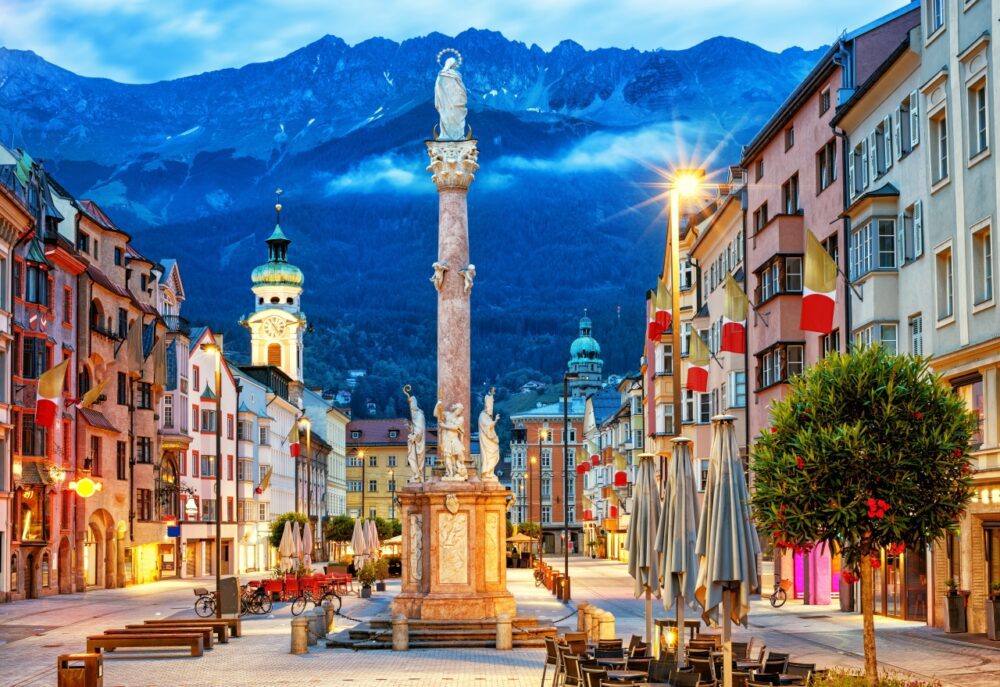
Innsbruck is one of the most scenic cities in Europe, surrounded by the dramatic peaks of the Austrian Alps. No matter where you are in the city, you’re never far from a postcard-worthy view of snow-capped mountains, green valleys, and charming Tyrolean villages. The blend of historic architecture and alpine scenery makes Innsbruck feel like a fairytale come to life.
I arrived by train, and the moment I stepped out of the station, I was greeted by towering mountains framing the city. Later, I took a walk along the Inn River, where the colorful medieval buildings of the Old Town stood in contrast to the rugged peaks in the background. Innsbruck’s natural beauty is truly unforgettable, making it an ideal destination for those who love mountain landscapes.
2. A Perfect Destination for Outdoor Enthusiasts

Whether you visit in summer or winter, Innsbruck is a paradise for outdoor lovers. In the winter, the city becomes a world-class skiing and snowboarding destination, with easy access to several top-tier ski resorts like Nordkette, Axamer Lizum, and Stubai Glacier. In the summer, the region offers fantastic hiking, mountain biking, rock climbing, and paragliding.
I took the Nordkette cable car up to Seegrube, where I found a network of hiking trails with panoramic views of the city below. Even if you’re not a serious hiker, simply enjoying a drink at the mountain lodge while taking in the scenery is an incredible experience. Innsbruck is the kind of place where you can go from city streets to mountain trails in a matter of minutes, making it a dream for adventure seekers.
3. A Charming and Walkable Old Town
Innsbruck’s historic Old Town is compact and easy to explore on foot, with narrow cobblestone streets, medieval buildings, and a vibrant mix of cafés, shops, and historic landmarks. The city’s most famous sight, the Golden Roof, is a beautifully decorated balcony built for Emperor Maximilian I in the 16th century, and it serves as the heart of the Old Town.
I spent hours wandering through the Old Town, discovering hidden courtyards, centuries-old churches, and cozy Austrian bakeries. The atmosphere was lively yet relaxed, and I loved how the city blended history with modern life. Whether you’re sightseeing, shopping for souvenirs, or simply soaking in the charm, Innsbruck’s Old Town is an absolute delight.
4. The Nordkette Cable Car Offers a Quick Escape into the Mountains
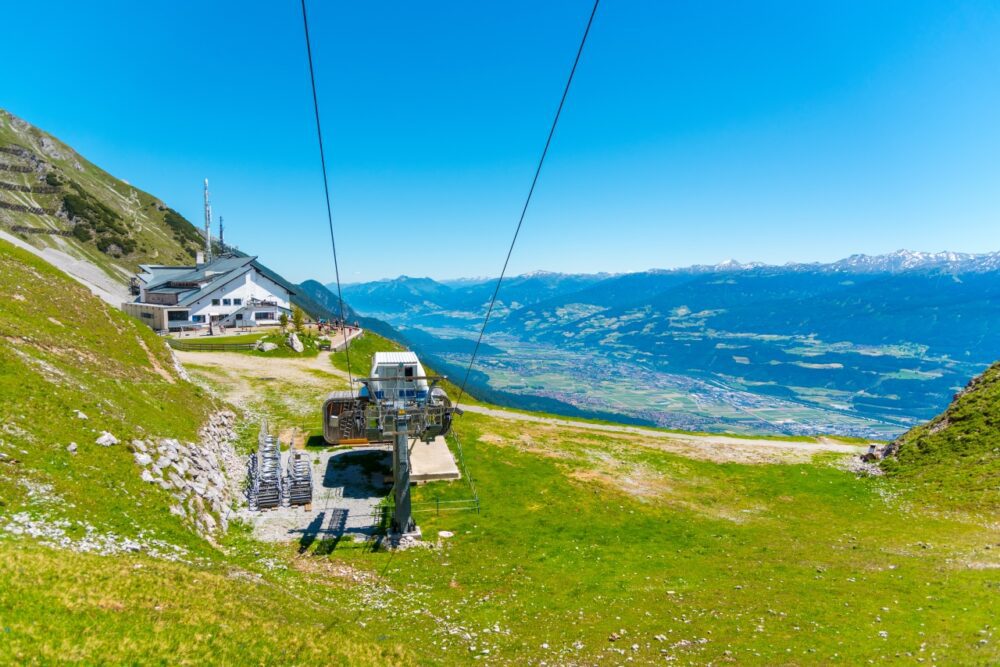
One of Innsbruck’s biggest advantages is how quickly you can access the surrounding mountains. The Nordkette cable car, which starts right in the city center, takes you up to the Karwendel Nature Park in just 20 minutes, offering some of the most spectacular alpine views in Austria.
I rode the cable car all the way up to Hafelekar, the highest station, and was blown away by the 360-degree views. On one side, you could see the entire city of Innsbruck, and on the other, endless mountain ranges stretching into the distance. Even if you’re not a skier or hiker, taking the Nordkette ride just for the views is absolutely worth it.
5. A Great Mix of Austrian and Italian Influences
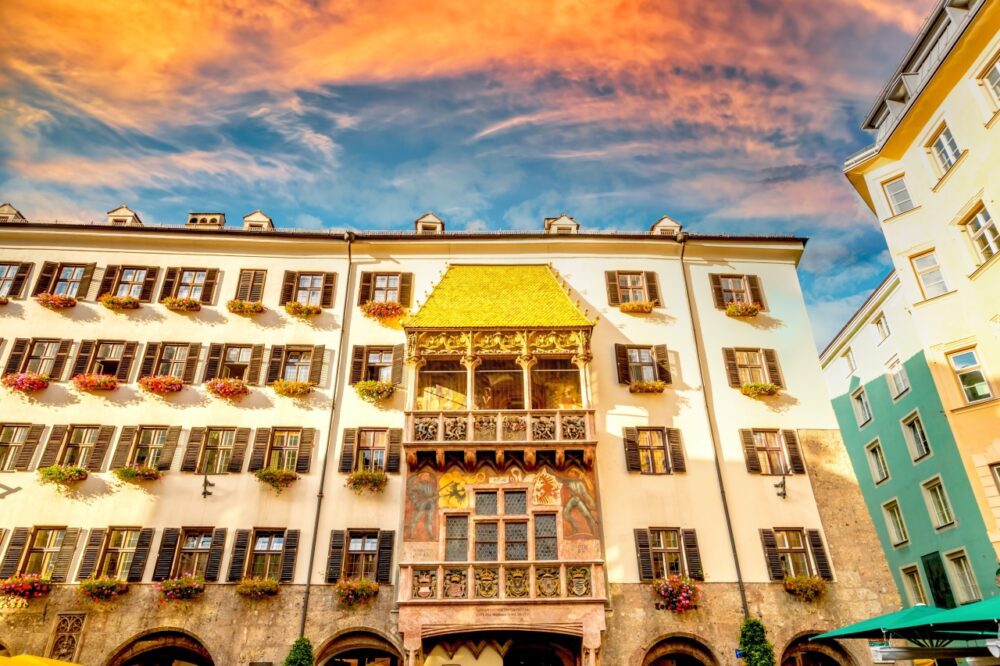
Due to its location near the Italian border, Innsbruck has an interesting blend of Austrian and Italian influences, both in its culture and cuisine. You’ll find traditional Austrian dishes like Wiener Schnitzel and Tiroler Gröstl (a hearty potato and bacon dish) alongside authentic Italian pasta, pizzas, and gelato. The city’s architecture also reflects this mix, with colorful facades and elegant arcades reminiscent of northern Italy.
I had an incredible meal at a local restaurant where I ordered a plate of homemade tagliatelle with truffle sauce, followed by a classic Austrian apple strudel. The combination of Austrian heartiness and Italian refinement made for a perfect dining experience. If you love food, Innsbruck offers the best of both worlds.
6. A Less Touristy Alternative to Vienna and Salzburg
While Vienna and Salzburg attract millions of tourists every year, Innsbruck remains a bit more under the radar. It has all the charm, history, and beauty of Austria’s larger cities but without the overwhelming crowds, making it a great choice for travelers who want a more relaxed and authentic experience.
I visited during peak season in the summer, and while there were definitely tourists around, it never felt overly crowded. I was able to visit popular sites like the Golden Roof and the Hofburg Palace without long lines or packed streets. Innsbruck feels like a hidden gem compared to other Austrian cities, offering a more peaceful and intimate experience.
7. A Rich History with Imperial and Royal Connections
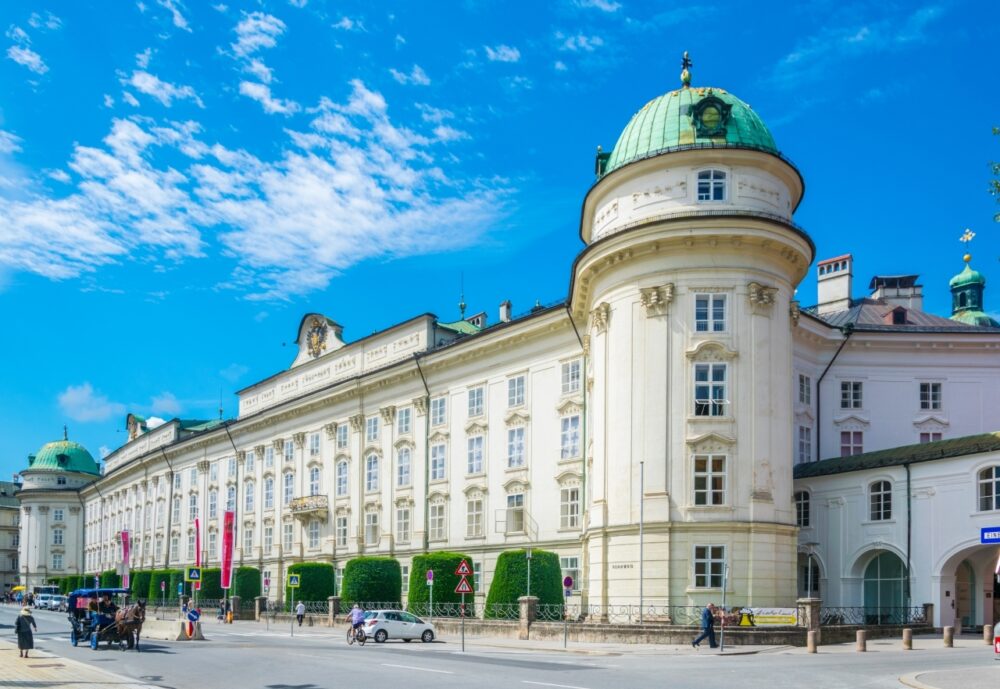
Innsbruck has a fascinating history, having served as a major political and cultural center during the reign of the Habsburgs. The city’s Hofburg Palace, once a residence for the Austrian emperors, is beautifully preserved and offers insight into Austria’s royal past. The Court Church, home to the impressive tomb of Emperor Maximilian I, is another must-visit historical site.
I took a tour of the Hofburg Palace, and the lavish rooms, ornate ceilings, and historical artifacts gave me a real sense of what life was like for Austrian royalty. Unlike Vienna’s grand palaces, Innsbruck’s Hofburg feels more intimate and approachable, making it a great place to learn about Austria’s imperial history without feeling overwhelmed.
8. The Christmas Markets Are Straight Out of a Winter Fairytale
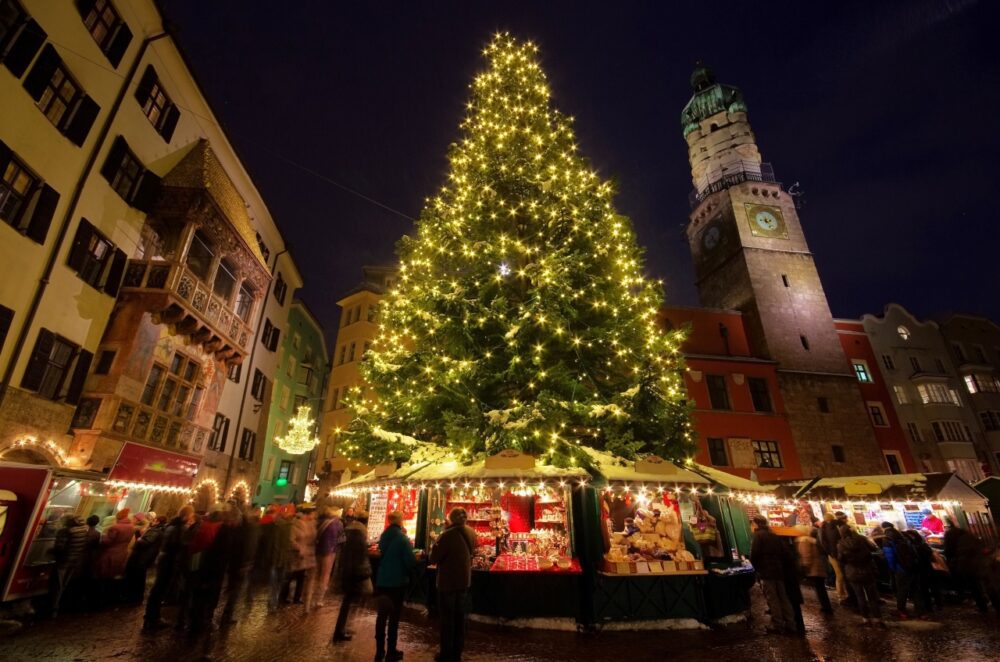
If you visit Innsbruck in December, you’ll be treated to some of the most magical Christmas markets in Austria. The Old Town transforms into a winter wonderland, with twinkling lights, festive stalls selling handmade crafts, and the scent of mulled wine and roasted chestnuts filling the air. The backdrop of snow-covered mountains makes the experience even more magical.
I visited the main Christmas market in front of the Golden Roof, and it felt like stepping into a holiday postcard. I sipped on warm Glühwein while listening to live Christmas carols, and the cozy atmosphere made it one of the most memorable holiday experiences I’ve ever had. If you love Christmas, Innsbruck is the perfect destination in December.
9. Easy Access to Other Beautiful Destinations
Innsbruck’s central location makes it a great base for exploring other parts of Austria and beyond. Day trips to places like the fairy-tale town of Hallstatt, the scenic Zillertal Valley, and even the Italian Dolomites are all possible from Innsbruck.
I took a short train ride to Seefeld, a picturesque alpine village with stunning hiking trails and traditional Tyrolean charm. The ability to explore so many incredible destinations within a short distance makes Innsbruck an excellent hub for travelers who want to see more of the region.
10. A City That Feels Both Traditional and Modern
Innsbruck manages to balance its rich history with a modern, youthful energy. The city is home to a major university, giving it a lively student atmosphere with trendy cafés, bars, and cultural events. At the same time, it still retains its deep-rooted Tyrolean traditions, from folk music to traditional alpine clothing.
I loved how Innsbruck had both old-world charm and contemporary appeal. One moment, I was exploring centuries-old palaces, and the next, I was in a stylish café sipping on a locally roasted coffee. The mix of past and present gives Innsbruck a dynamic character that makes it appealing to all kinds of travelers.
Cons – Things You Should Consider When Visiting Innsbruck
1. The Cost of Accommodation and Dining Can Be High
Innsbruck is a stunning destination, but it isn’t always budget-friendly. While it’s not as expensive as Vienna or Zurich, the city’s popularity as both a winter sports hub and a summer alpine retreat means that hotels and restaurants can be pricey, especially during peak seasons. Ski resorts in the winter and mountain lodges in the summer charge premium rates, and even mid-range hotels in the city center can feel expensive compared to other Austrian towns.
I visited during ski season, and finding reasonably priced accommodation was a challenge. Many of the hotels near the slopes were fully booked months in advance, and even budget-friendly guesthouses in the city were charging higher rates than expected. Eating out also added up quickly—while traditional Tyrolean food is delicious, many restaurants cater to tourists and come with higher-than-average prices. Booking accommodations early and seeking out local cafés or self-catering options can help cut costs.
2. The Weather Can Be Unpredictable, Even in Summer
Due to its location in the Alps, Innsbruck experiences highly variable weather throughout the year. Winters are cold and snowy, which is expected for a ski destination, but summer and shoulder seasons can also bring sudden temperature drops, heavy rain, and unexpected snow at higher elevations. Even on what seems like a warm day in the city, the mountains can be significantly colder, requiring extra layers.
I visited in June expecting mild summer weather, but within hours of arriving, a sudden rainstorm rolled in, forcing me to take shelter in a café. The next morning, it was warm and sunny again, but by the afternoon, the temperature had dropped dramatically in the mountains. If you’re planning to explore Innsbruck, packing for all seasons is essential—bringing a rain jacket, warm clothing, and sunscreen all in the same bag might seem excessive, but it’s necessary.
3. Limited Nightlife Compared to Larger Cities
While Innsbruck has plenty of bars, beer halls, and après-ski spots, it doesn’t have the same vibrant nightlife as bigger Austrian cities like Vienna or Salzburg. The local nightlife scene is more relaxed and revolves around cozy pubs, small clubs, and traditional Austrian taverns rather than big, high-energy nightclubs. Many places close earlier than expected, and outside of ski season, the nightlife can feel a bit quiet.
I went out one evening looking for a lively bar and found that most places had a laid-back, intimate feel rather than a buzzing party atmosphere. While this suited the alpine setting, those looking for a wild night out might be disappointed. The university population does bring some energy to the nightlife, but Innsbruck is not the kind of city where you’ll find all-night clubbing or massive dance floors.
4. Some Attractions and Activities Are Seasonal
Innsbruck is a city that offers both summer and winter activities, but some experiences are only available during specific seasons. The world-class skiing, for example, is obviously limited to the winter months, while hiking trails and mountain excursions are best enjoyed in summer. If you visit during the transitional periods in spring or late autumn, you might find that some mountain lifts, alpine attractions, or outdoor activities are closed or operating on a limited schedule.
I visited in late October, hoping to do some early-season skiing, but most of the ski resorts hadn’t opened yet. At the same time, some of the higher-altitude hiking trails were already covered in snow, making them difficult to access. If you’re planning a trip, checking the availability of certain activities in advance is important to avoid disappointment. Innsbruck is always beautiful, but timing your visit to match your interests is key to making the most of it.
5. It’s a Small City with a Limited Number of Attractions
Innsbruck is charming and packed with history, but it’s much smaller than cities like Vienna or Munich. While there’s plenty to see, most of the major attractions—including the Golden Roof, Hofburg Palace, and the Nordkette cable car—can be covered in just a couple of days. If you’re staying for an extended period, you might find yourself running out of things to do within the city itself.
I spent three full days in Innsbruck and felt like I had seen most of what the city had to offer. While I enjoyed taking day trips to nearby villages and nature reserves, travelers who prefer big cities with endless museums, galleries, and entertainment options might find Innsbruck a bit too quiet. If you’re staying longer than a few days, planning excursions to places like Hall in Tirol, Seefeld, or even northern Italy can help keep your itinerary exciting.
When to Visit Innsbruck
Innsbruck is a year-round destination with two distinct peak seasons. Winter (December to March) is ideal for skiing and snowboarding, with snow-covered slopes and festive holiday markets creating a magical Alpine experience. Innsbruck’s ski resorts are world-class, and you’ll find everything from beginners’ slopes to advanced runs. Summer (June to September) is another great time to visit, when the snow melts to reveal hiking trails, mountain biking paths, and crystal-clear lakes. Late spring and early autumn can be quieter and more affordable, with cooler weather perfect for exploring the city and nearby valleys without the crowds.
How to Get to Innsbruck
Innsbruck Airport (INN) is only about 4 kilometres from the city, with direct flights from major airlines such as Lufthansa, Austrian Airlines, and Transavia connecting Innsbruck to various European hubs. From the airport, you’re just 15 minutes from the city centre via bus, taxi, or rideshare. If flying into Innsbruck isn’t convenient, consider Munich Airport (MUC), which is around two hours away by direct train, or even Zurich Airport (ZRH), roughly three hours away. OBB trains offer scenic and efficient connections from both Munich and Zurich, making it an ideal option for those arriving by air or train from other parts of Europe.
Where to Stay in Innsbruck
Innsbruck offers a range of accommodation options that let you choose between mountain views and central convenience:
- Luxury: Altstadt (Old Town) – Stay in the historic centre near the Golden Roof. The Penz Hotel and Grand Hotel Europa both offer modern amenities and spectacular mountain views.
- Mid-range: Hötting – Just across the river from Altstadt, this district is more relaxed but still close to central attractions. Options like NALA Individuellhotel and Hotel Innsbruck provide charm without the hefty price tag.
- Budget: Pradl – Located east of the city centre, Pradl offers affordable stays and good transport links. Look for MEININGER Hotel Innsbruck Zentrum or Motel One Innsbruck for a cost-effective base with easy access to the heart of Innsbruck.
Getting Around Innsbruck
Innsbruck is compact, and you can explore most of the central sights on foot. For longer journeys, the IVB public transport network includes buses, trams, and regional trains that connect the city and surrounding areas. Day passes are available and offer better value if you plan to hop around multiple sights. For eco-friendly exploring, Innsbruck also has a bike-sharing programme, Stadtrad Innsbruck, with pick-up points throughout the city. If you’re heading up the mountains, try the Nordkettenbahn cable car from the city centre—this scenic ride will have you in the Alps in under half an hour.
How Long to Spend in Innsbruck
To properly experience Innsbruck, plan on spending three to four days. This allows time to explore the Old Town, visit the Imperial Palace, and get up into the mountains for some hiking or skiing. For winter visitors, an extra day or two gives you time to explore the nearby slopes. If you’re visiting in summer, consider adding a day trip to Seefeld or Achensee for more outdoor activities and stunning Alpine views.
Conclusion
So, is Innsbruck worth visiting? Definitely! With its breathtaking alpine views, rich history, and year-round activities, Innsbruck offers a unique blend of city life and mountain adventure. While it’s not the cheapest destination, the unforgettable experiences it provides—from skiing in winter to hiking in summer—make it well worth the trip. If you’re ready to immerse yourself in the beauty of Austria’s Tyrol region, start planning your visit to Innsbruck today. You won’t regret it!
